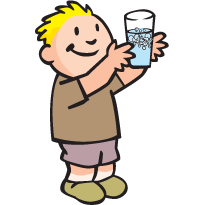Boston Children's Museum
308 Congress Street, Boston, MA 02210
617-426-6500
© Boston Children’s Museum 2025
Website Design by JackrabbitCooking activities are filled with great learning opportunities. Along with measurement and math skills, kids can develop problem solving and literacy skills as well. By experimenting with the ways that certain ingredients act and react with each other, children will gain an understanding of basic cooking chemistry, and by isolating these reactions, kids can become more knowledgeable bakers.
This activity is a follow up to Cupcake Science. If you have not yet completed that activity, try it first, then move on to this activity.
Make sure you have both hot and cold water for this activity. Separate the ingredients into cups so that each team has a set. For the first activity, each team will need a cup of baking powder, cold water, milk, oil and vinegar. Label the cups using the tape and markers, especially for the baking powder, baking soda and flour, which look a lot alike, as do the vinegar and water. Each team will only need about 1/4 cup of each ingredient.

Refer to your students’ experiences baking cupcakes in the Cupcake Science activity. What role do they think the baking powder played? What would a cupcake made without baking powder look like?
Can you experiment with different ingredients to figure out why we use baking powder or baking soda when we bake?
After 10-15 minutes, stop your students and bring them together to share their observations with each other. Draw a grid on a piece of chart paper or on a chalkboard with all of the ingredients in the columns and the rows as well (see Figure 1).
Ask each team what they observed when they mixed the ingredients together. Record their observations in the grid. For example, if baking powder and vinegar turned fizzy, write “fizzy” in the box where vinegar and baking powder meet (see below). If nothing happened, write “nothing” in the box.
Fill the grid with your students’ observations. Did everyone come to the same conclusions? Do they have any guesses as to what role baking powder plays in their cupcake recipes? Are there any other ingredients they would like to try mixing to see what happens?
Let your students experiment some more, and introduce some new ingredients. Ask each team to clean out their ice cube trays, then offer them hot water (not too hot!), flour and baking soda and anything else they want to experiment with. Make sure they note the differences between baking powder and baking soda. Does one react to some ingredients that the other does not? Does the hot water react differently than the cold water? When they have completed their experiments, make another grid that includes these new ingredients.